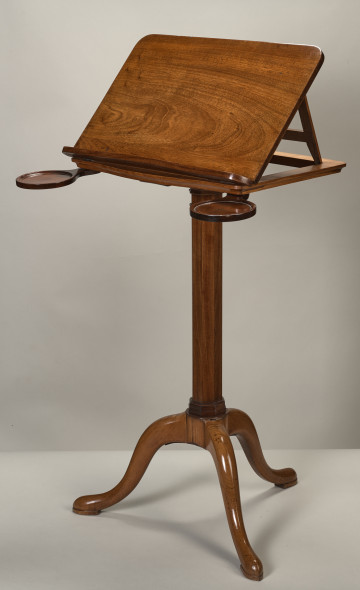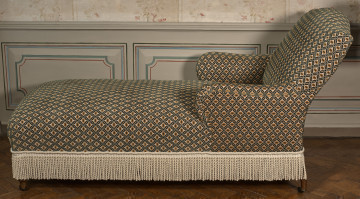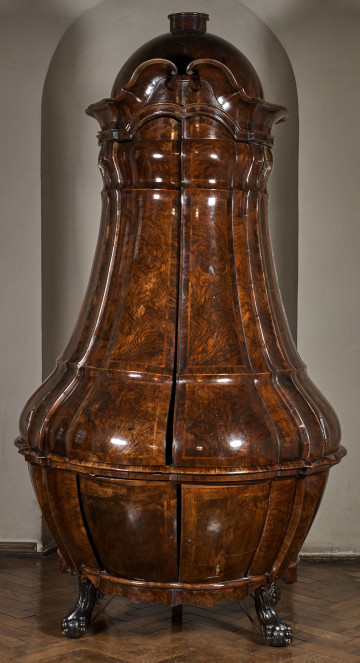
Wooden desktop
18th-19th century
Castle Museum in Łańcut
Part of the collection: Meble i wyposażenie wnętrz
After the end of the French Revolution and after the fall of the Directory whose program championed simplicity in interior design, a new style came to dominate art at the beginning of the 19th c. It appeared with Napoleon Bonaparte's rise to power and it was called the Empire style. The new trend expressed the personal preferences of Napoleon I, who was inspired by the might of ancient civilisations - the Greeks, Romans, and Egyptians. The Empire style became a propaganda tool for the glorification of the French Empire and its ruler. Widespread in Europe, the style was developing in Poland, which was captivated by Napoleon's military victories that inspired hope for regaining the country's lost independence. In interior design, the new trend was distinguished by direct borrowing from ancient models. Where there were none, pseudo-antique works were created. This is especially well exemplified by furniture. The Empire style imposed strict symmetry, smooth surfaces, and expressive lines. Furniture was usually made of mahogany or covered with a layer of mahogany veneer. Ornamentation also evoked ancient epochs. For example, the winged busts of women called herms, which crown the supports of the shelves of the presented display case, finished at the bottom with pairs of naked feet standing on a three-sided base. The multi-level open shelf known as 'étagère' - meaning 'shelf' in French ('étager' - level, floor) - appeared in France in the second half of the 18th c. and became widespread in the 19th c. Teresa Bagińska-Żurawska https://orcid.org/0000-0002-9243-3967
Author / creator
Object type
Furniture and interior fittings
Technique
gilding
Material
bronze, mahogany wood
Creation time / dating
Creation / finding place
Owner
Castle Museum in Łańcut
Identification number
Location / status

18th-19th century
Castle Museum in Łańcut

20th century
Castle Museum in Łańcut

18th century
Castle Museum in Łańcut
DISCOVER this TOPIC
National Museum in Szczecin
DISCOVER this PATH
Educational path